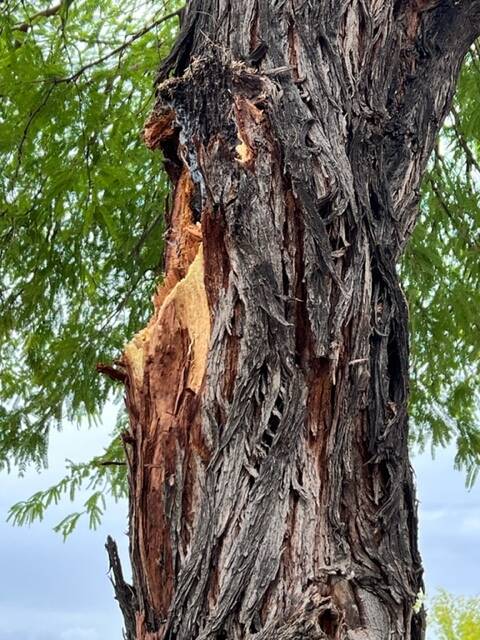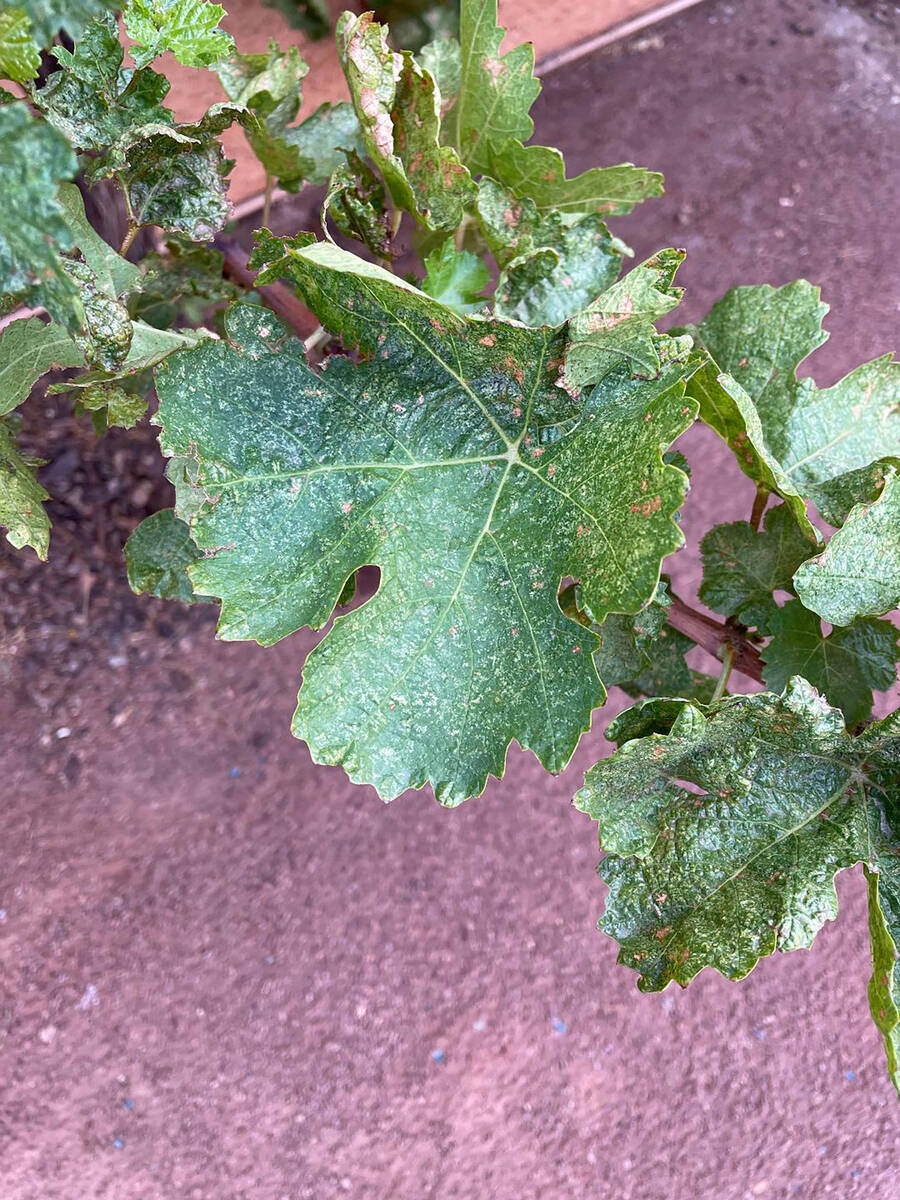Nematodes rarely found in recently planted trees
Q: The kumquats I planted in the ground suffered from something, the same as the ones I planted in containers. Is this damage because of nematodes? I can’t figure it out. I grew bananas in the same soil for a few years and I had success with them before I decided to grow kumquats.
A: Nematodes are a rare occurrence in young plants. It is normally not something that happens to recently planted trees unless you have nematode infested soil.
The most common nematodes infesting plant roots are the root-knot nematodes that form swollen BB-sized balls on the roots of infested plants. Those small balls on the roots of plants are how you determine if your plants are infested with nematodes or not. Plants growing in containers with nematode-infested soil are much easier to deal with than plants growing in infested soil in the garden.
The normal recommendation for nematodes is to water and fertilize the plants so they are rapidly growing. Rapidly growing plants minimize the effects of nematode damage. For this reason, it’s not common to see this type of damage on young plants since they are usually actively growing.
It is more likely your management practices — how you are watering or soil management issues. Disease or insect problems are usually less frequent for plants growing in the desert. Inspect the roots of plants and look for nematode root damage when temperature permits.
Q: I have a lattice on the south side of the patio with two pyracanthas and one honeysuckle vine. All have done well over the last three years, but the honeysuckle leaves are turning black. Watering six days a week for 20 minutes in the morning and 20 minutes in the evening. The drip emitters are 4 gallons per hour, one emitter per vine. Can anything be done to prevent the leaves from turning black?
A: As woody plants get larger, they need more water. This includes vines. All plants need water applied to a larger area to accommodate their larger size and wider growth of roots.
Roots need to grow wider to support the plant and harvest more nutrients from the soil. When watering daily, there is no growth of deep roots and any deep roots that were there die from drowning.
Irrigate woody plants deeper once at least every other day to give the soil surrounding the roots a chance to drain. Let the top few inches of the soil dry out before watering again so that the deeper roots use more of the applied water.
If the plant needs more water, add another drip emitter so that you can leave the number of minutes unchanged. The only time the days of the week are changed is because of the time of year. Otherwise, the number of minutes of watering stays about the same.
Growing like a vine is not unusual for the group called honeysuckle. I am guessing it’s Hall’s honeysuckle which is a Japanese native plant. Halls honeysuckle was chosen because it tolerates the heat and native exposures of Japan’s soils and environmental extremes.
Planting location is more important when it comes to the desert. Because this vine originates from Japan it is considered mesic.
Japanese honeysuckle does not like rock so much when growing in our Mojave Desert, particularly if it is surrounded by it. The mistake that was made perhaps was planting it in a hot location, perhaps not enough soil improvement at the time of planting, and surrounding it with rock mulch, a double whammy for many mesic plants.
If the rock can be raked back 3 feet in all directions from the trunk and then a thin layer of compost applied to boost the organic content of the soil, you might be able to save it. If compost or manure is used as the organic amendment to top the soil, keep it away from the trunk by 6 to 12 inches. Then rake the rock back and water this area thoroughly.
There is no reason to water landscape plants twice every day even if it is hot. This is like giving tiny sips of water to the plants.
If the plants need more water and deeper, then give the larger amount of water every other day at most, not twice a day. This type of watering wets the top of the soil but never gets it deep. In my opinion, add a second drip emitter to these plants, keep the minutes on your clock the same, and then skip a day between irrigations.
Q: I have two pyracantha vines in my landscape that are about 3 years old. They are starting to have yellow leaves.
A: Pyracantha is not a vine but a shrub. It is, like Japanese honeysuckle, a mesic shrub originating instead from the dry Mediterranean region and others from the drier parts of Asia. Because pyracantha is from mesic locations, it prefers to grow in soils kept moist along with higher organic content compared to the desert.
It does not like to be planted in hot and dry Mojave Desert soils without amendments and irrigation. Your job is to monitor the organic content of the soil every few years and add it when necessary. It’s also your job to monitor the moisture of your soil and irrigate the plant when necessary.
It oftentimes doesn’t like Mojave Desert soils covered in rock because the organic content eventually runs out”in a few years. When planted in locations that ignore its heredity, such as soils covered in rock, it eventually first gets sick, then starts dying.
To prevent this from happening use woodchips as a surface mulch instead of rock covering the soil surface, and let it rot into the soil.
Be careful of hot landscape locations. The first sign the organic content of the soil is disappearing is yellowing leaves. This leads to watering daily and not giving its roots a chance to breathe.
You can do two things: either add iron or add woodchips or both. I would suggest both at first. As long as the soil is continuously amended and kept moist, it frequently improves. If the soil loses its organic content, then it starts growing yellow leaves from the tips.
Oleanders are Mediterranean and mesic as well and tolerate rock mulch on many occasions, similar to pyracantha. Both healthy pyracantha and oleander tolerate our high temperatures but not rock landscapes, particularly in extremely hot locations.
Pyracantha is one of the few shrubs that are better off pruned by hedge shears so they shade their trunk and branches. When young, they will not tolerate growing close to hot south- or west-facing walls very well.
In the cooler fall months, about October, it is best to move young pyracantha to a cooler spot in the landscape such as areas shaded by the east or north sides where they receive afternoon shade.
Q: Can a large wound heal from the broken limb of a tree? Or is a wound sealer needed? My tree was damaged by strong winds.
A: The wound, just like cutting your finger, is best left alone to heal. Trim up any rough spots that will not heal over easily and let this large wound heal. No wound sealer is necessary. The wound starts healing in 24 hours after a wound, regardless of its size or environmental conditions.
Q: My grape vines developed some small yellow spots on their leaves. I have four Thompson seedless grape vines that produced a good crop of grapes this year but otherwise developed this condition. What is it and how do I prevent it from happening to my grapes next year?
A: This is leafhopper damage to the leaves. Leafhoppers are very tiny insects, hundreds or thousands of them, that suck the juice out of grape leaves and leave small yellow dots on the surface.
Some people claim they fly but they actually jump like a very tiny grasshopper. When they eat, they poop; if you look closely, you may see tiny black specks on the leaves as well.
As their population gets bigger throughout the year they become more and more of a problem leaving yellow spots, black specks on the leaves and fruit (which makes the fruit taste off-flavor), and jump in your face when you walk by the vine. If not controlled, they can become a big pest on grapes from about April through the rest of the year.
What to do? Luckily one of the pesticides used to control skeletonizers, another problem on grapes, also reduces leafhopper populations. Applu Spinosad to the grape leaves, both on the top and bottom of leaves, starting in April. Three applications of a Spinosad spray, starting in April and six weeks apart, will control skeletonizers and lower the number of leafhoppers, reducing their damage as well.
Other sprays to control skeletonizers (such as Bt) do not reduce the population of leafhoppers and are not as effective.
Q: What are your thoughts about a black or dark discoloration on the limbs of an 18-year-old oak tree?
A: If the tree otherwise looks healthy, then it is probably sooty mold growth from honeydew excreted by aphids mostly during the spring and possibly the fall months. It’s hot now for aphids so I would expect aphid numbers to be considerably lower now if they are present at all.
Nothing to worry about if everything else looks healthy. Controlling soil-borne ant nests within 30 feet of this tree is also important so that the ants don’t spread the aphids around.
For future control, consider dormant oil or horticultural oil applications (not Neem oil but horticultural oil) to the tree at least once during the winter months.
Bob Morris is a horticulture expert and professor emeritus of the University of Nevada, Las Vegas. Visit his blog at xtremehorticulture.blogspot.com. Send questions to Extremehort@aol.com.



















